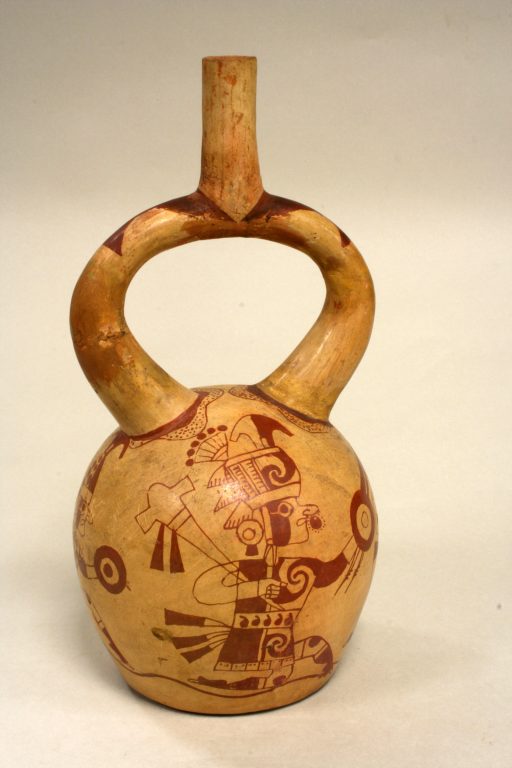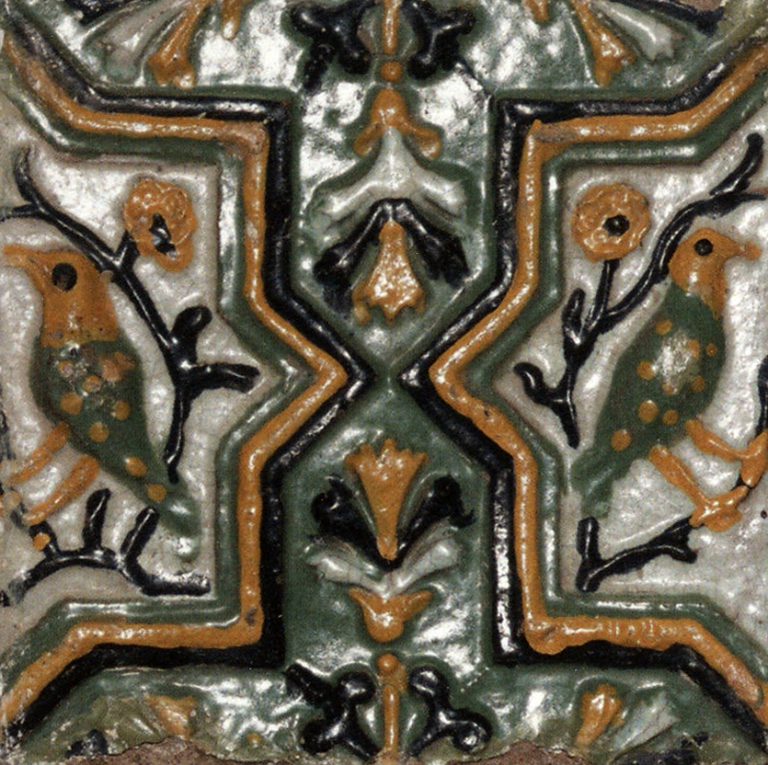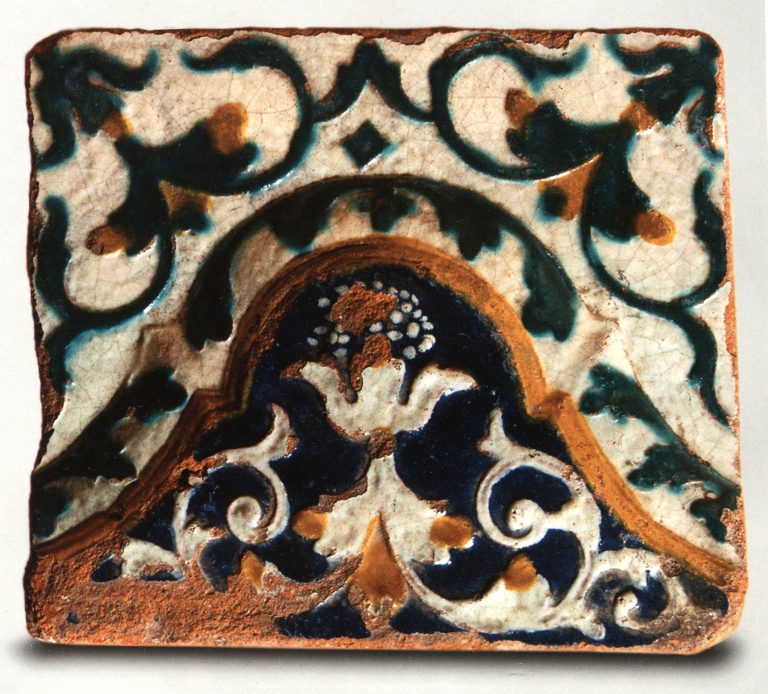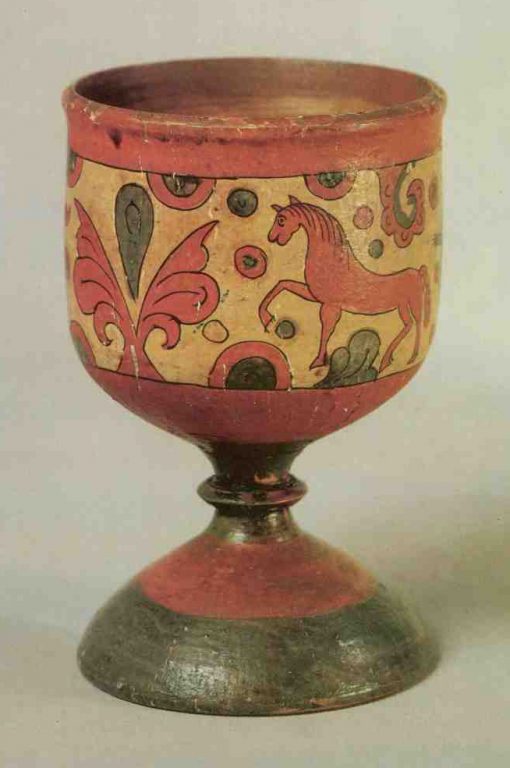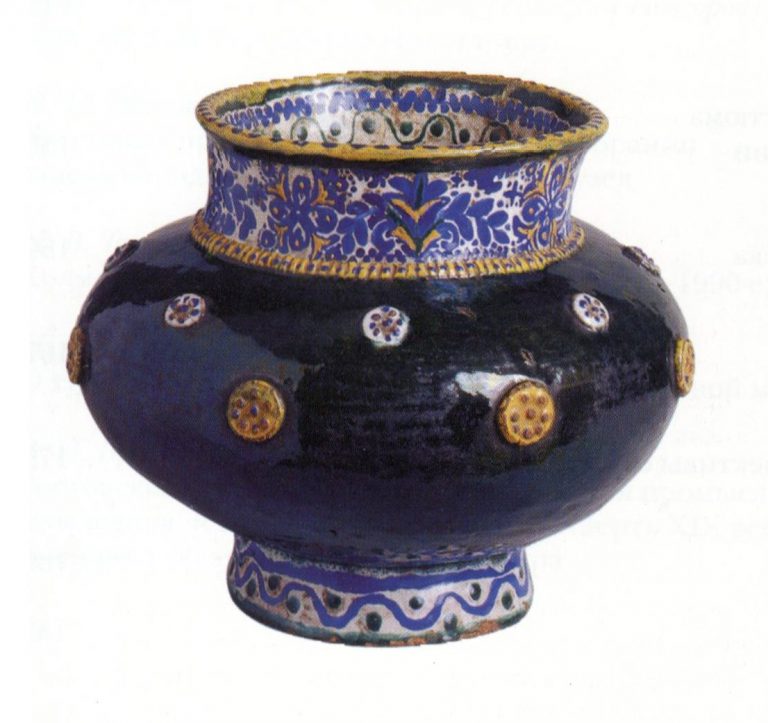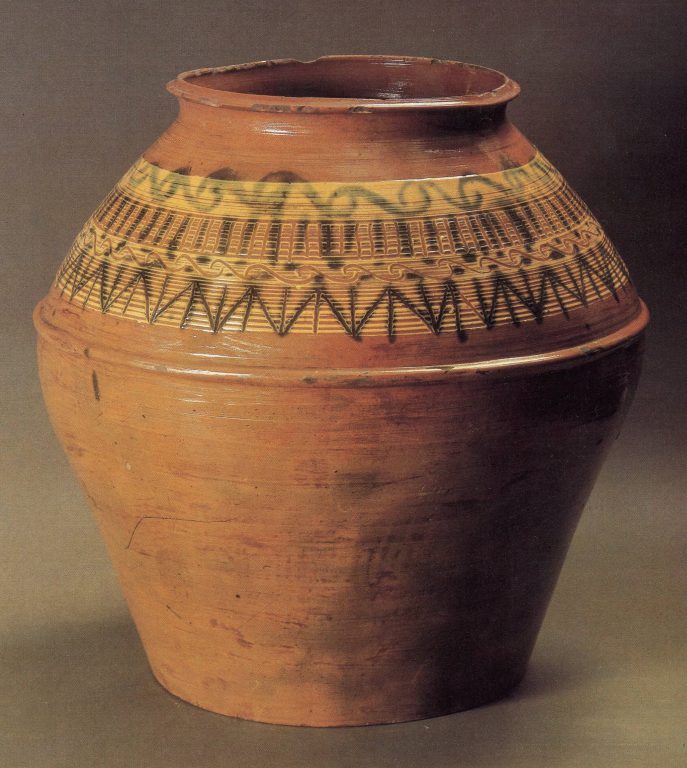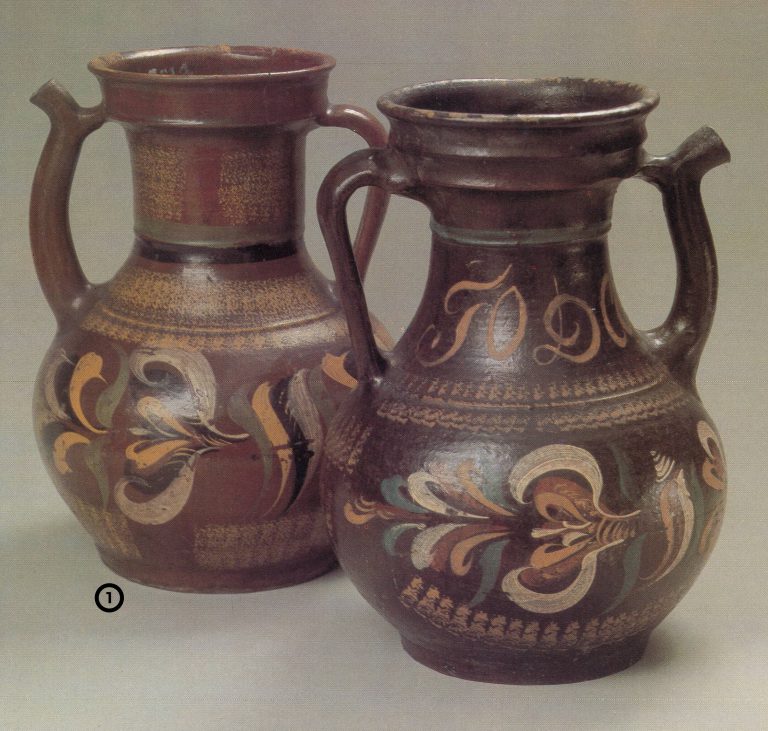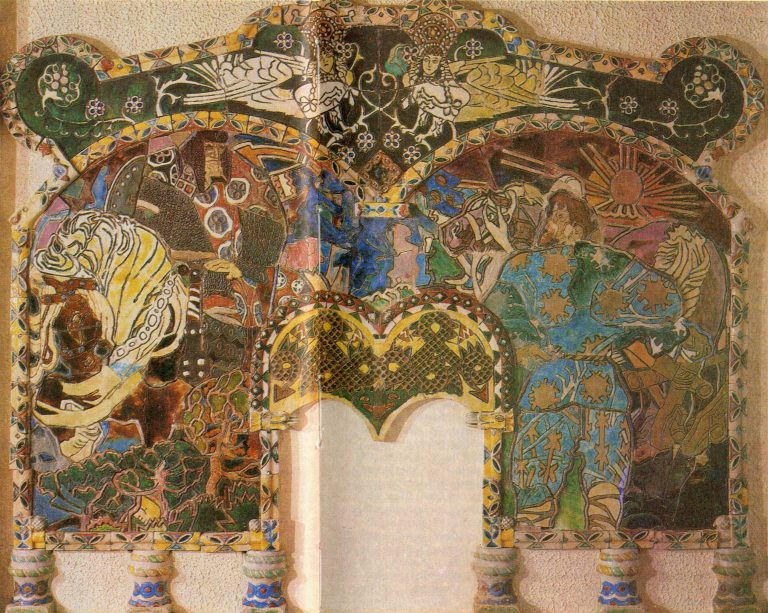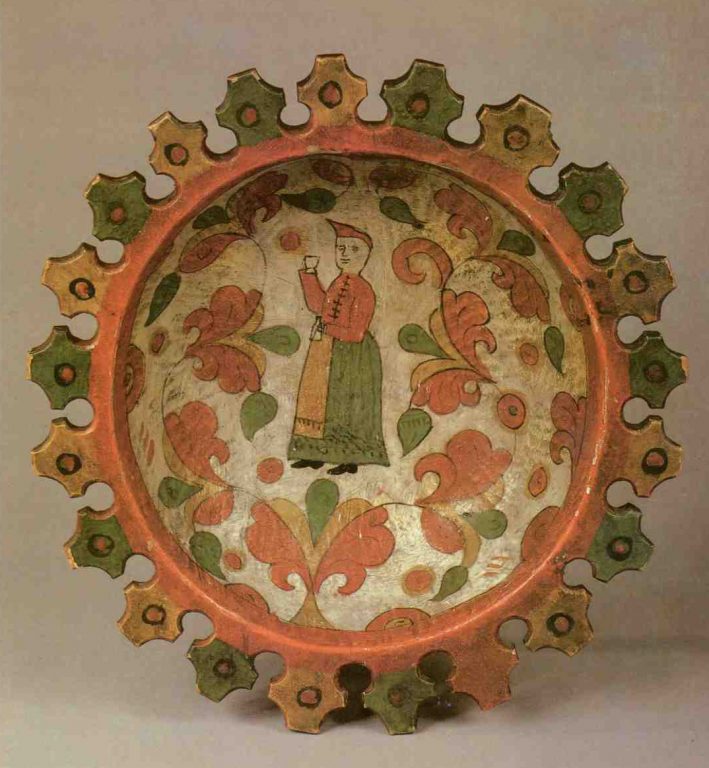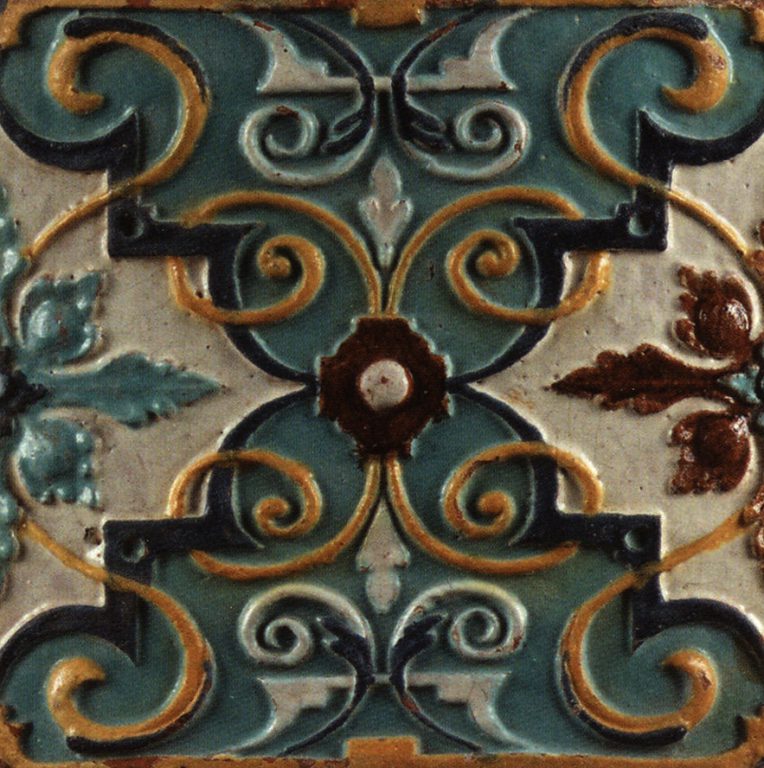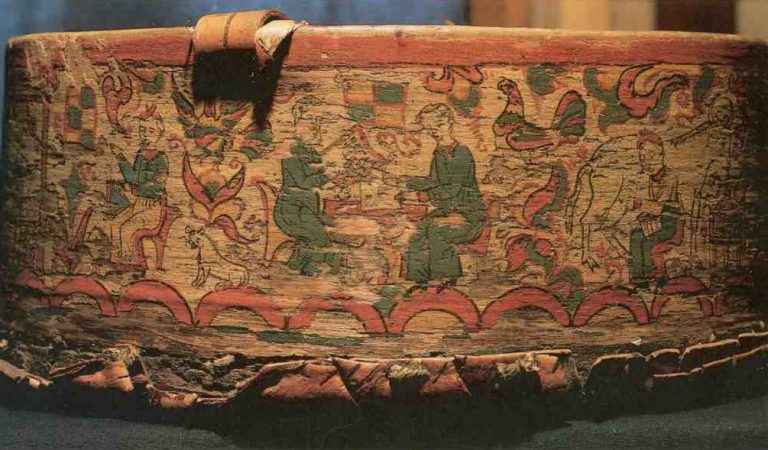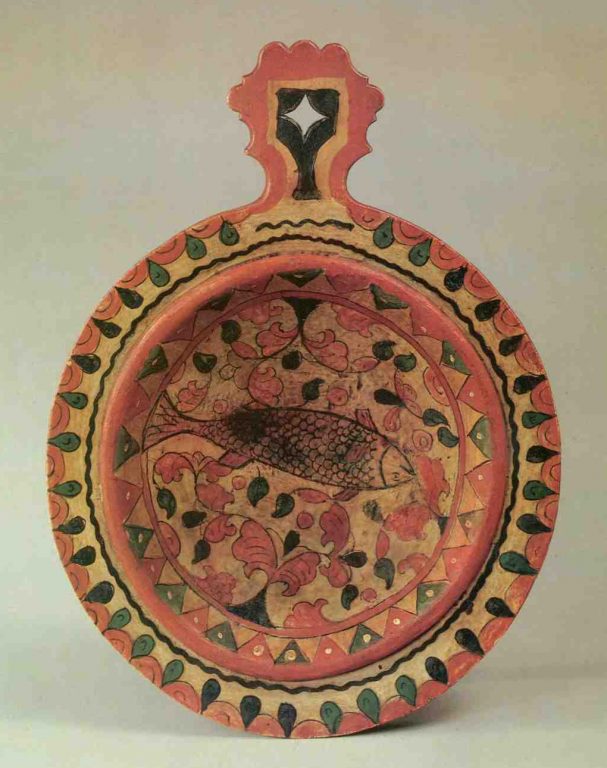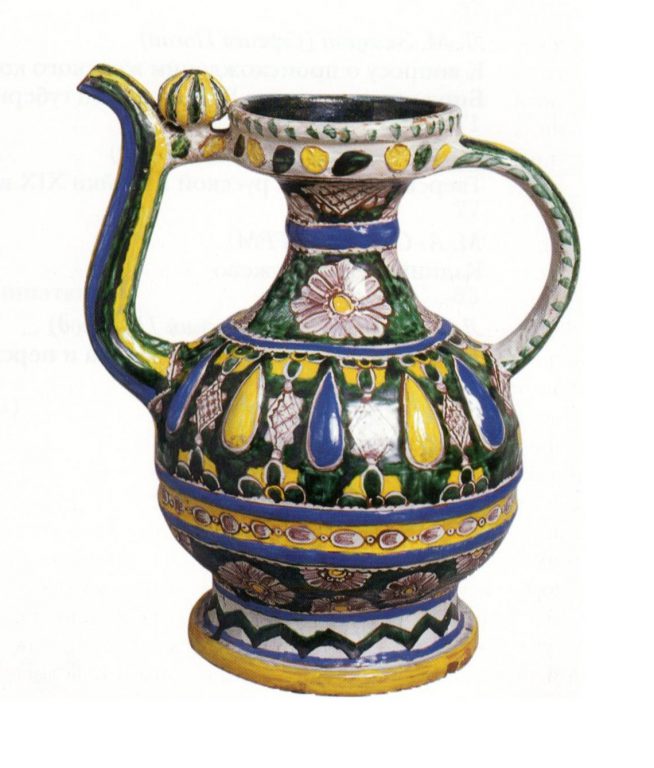

-
Objecttableware: Bottle
-
Type of arts & crafts
-
MediumCeramic, slip, pigment
-
SizeH. 12 1/4 Г— Diam. 6 1/8 in. (31.1 Г— 15.6 cm)
-
Geography details
South America -
Country today
-
Date3rd-5th century
-
CultureMoche
-
Type of sourceDatabase “Metropolitan Museum of Art”
-
Fund that the source refers toMetropolitan Museum of Art
-
This ceramic vessel depicts four warriors running over an undulating line that may represent hills. Created by artists of Peru’s Moche culture, the style of painting is called “fineline,” so named for the detailed compositions delicately painted in red slip (a suspension of clay and/or other colorants in water) on a white ground. Each warrior wears a helmet surmounted by a crescent-shaped finial and tied under the chin (see Sawyer, 1966: 42–23, for a rollout drawing of the painting on the vessel). The crescents likely represent actual silver or gold ornaments; one pair of combatants may sport bimetallic crescents. Two of the helmets have feathers projecting from the back. The decorations on three of the helmets mirror the pattern on the wearers’ cinched tunics. The belts are decorated with a teardrop-shaped motif representing an ulluchu fruit (McClelland, 2008). The warriors without bimetallic helmet crescents wear bimetallic back flaps (a type of body armor suspended from the waist at the back), while the other warriors have smaller elements hanging from the waist at the back. All four warriors carry maces and shields, but the individuals without back flaps carry spears or darts. Only the warriors without back flaps wear nose ornaments. The clear demarcation of dress and regalia between the pairs may indicate that the artist intended to represent two distinct ranks or types of warriors.
The artist further embellished the vessel by painting triangular forms on the lower arms of the spout and wavy lines at the attachment points. The stirrup-spout vessel—the shape of the spout recalls the stirrup on a horse’s saddle—was a much favored form on Peru’s northern coast for about 2,500 years. Although the importance and symbolism of this distinctive shape is still puzzling to scholars, it has been suggested that the double-branch/single-spout configuration may have prevented evaporation of liquids, and/or that it was convenient for carrying. Early in the first millennium A.D., the Moche elaborated stirrup-spout bottles into sculptural shapes depicting a wide range of subjects, including human figures, animals, and plants worked with a great deal of naturalism. About 500 years later, bottle chambers became predominantly globular, as in the present example, providing large surfaces for painting complex, multi-figure scenes.
The Moche (also known as the Mochicas) flourished on Peru’s North Coast from 200-850 A.D., centuries before the rise of the Incas (Castillo, 2017). Over the course of some six centuries, the Moche built thriving regional centers from the Nepeña River Valley in the south to perhaps as far north as the Piura River, near the modern border with Ecuador, developing coastal deserts into rich farmlands and drawing upon the abundant maritime resources of the Pacific Ocean’s Humboldt Current. Although scholars do not agree on the precise nature of Moche political organization, the centers clearly shared unifying cultural traits such as religious practices (Donnan, 2010).
References
Castillo, Luis Jaime. “Masters of the Universe: Moche Artists and Their Patrons.” In Golden Kingdoms: Luxury Arts in the Ancient Americas, edited by Joanne Pillsbury, Timothy Potts, and Kim N. Richter. Los Angeles: J. Paul Getty Museum, 2017, pp. 24–31.
Donnan, Christopher B. “Moche State Religion.” In New Perspectives on Moche Political Organization, edited by Jeffrey Quilter and Luis Jaime Castillo. Washington D.C.: Dumbarton Oaks Research Library and Collection, 2010.
McClelland, D. “Ulluchu: An Elusive Fruit,” in The Art and Archeology of the Moche, edited by Steve Bourget and Kimberly l. Jones, pp. 43-65. Austin: University of Texas Press, 2008.
Wassermann-San Blás, Bruno John. Céramicas del antiguo Perú de la colección Wassermann-San Blás. Buenos Aires: Bruno John Wassermann-San Blás, 1938. See especially no. 16, p. 12.
Sawyer, Alan Reed. Ancient Peruvian Ceramics: The Nathan Cummings Collection. New York: The Metropolitan Museum of Art, 1966, pp. 42–43.


